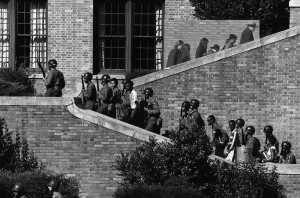The title of Mark Bauerlein‘s book is somewhat provocative. It’s called, “The Dumbest Generation, How the Digital Age Stupefies Young Americans and Jeopardizes Our Future.” As I am very much an advocate for incorporating technology in the classroom, it’s not too unexpected that I disagree with large parts of his thesis.

Yes there is probably an important link between the brain and the hand that facilitates creative work. But it does not necessarily follow that, “Writing by hand, students will give more thought to the craft of composition. They will pause over a verb, review a transition, check sentence lengths …” (Bauerlein, 2010). As we work on habits of revision there seems to be no real reason why they should spend more time on improving a sentence they’ve hand written than one they’ve typed. True, if students are conditioned to write in short rapid bursts of texting it will translate into their other writing, but it is the role of the teacher to help them delineate these different genres of writing. I also have not seen the evidence that writing by hand is any less abstract than writing by typing on a keyboard. We are already expressing ideas using an abstract medium, words, why is one form of expression better than the other?
Where I do agree with Bauerlein is on the need to take breaks, even substantial ones, from technology and the online world. Where I see the greatest need for this is in aiding student’s comprehension of the natural world. You live too long in the virtual world and you begin to translate that experience into the real world. Yet the virtual world remains a model of the real one. It is simplified and enhanced to make it a more enjoyable experience, so the lessons you learn there do not truly apply to the real world. In addition, physical experience in the virtual world, at least for now, cannot create the kinesthetic, mind-body understanding of the laws of physics and biology that you learn from real-world games and just walking along the nature trail. This is why I am a firm believer in our week-long immersions every six weeks.
So I continue to allow my students to introduce new technology to the classroom, as long as they can show me that it is effective in helping them learn. The latest thing is the proliferation of iPod Touches. I like the iPods because of apps like iSeismo that lets you monitor vibrations in 3D. However, on our recent visit to the Le Bonheur Hospital a number of my students took their notes on their iPods. I personally don’t believe that these are more effective than pencil and paper because you can’t combine text and images very effectively on an iPod, but they did take copious notes (which they were quite proud to show me). I’m planning on giving them a quick quiz to see what they learned from the trip so we’ll see just how effective their note taking was.
We’re all swimming in a sea of new technologies, and we can’t really tell what will benefit and what will hinder without trying them out. So, I at least conclude that the key goal of middle school education should be to create in students a core competence and confidence that will help students navigate steadily in this world of much information and rapidly changing fads. A fundamental understanding of the mechanisms that underlie people’s behavior is key. Know yourself and understand how societies behave. The first is not trivial and the second requires drawing general conclusions from a lot of historical data, which is quite challenging for most adolescents, but that’s why we teach the way we do.
Note: There is an interesting discussion of the use of technology in the traditional classroom going on now on Will Richardson blog post “The Big Questions: Now What?“





